This article was medically reviewed by Ken Miyazato, DDS. Dr. Miyazato is a Dentist at Santa Clara Valley Medical Center in the San Francisco Bay Area. He received his DDS from the University of Pacific in 2013 and completed his residency at the Lutheran Medical Center in 2014.
There are 12 references cited in this article, which can be found at the bottom of the page.
wikiHow marks an article as reader-approved once it receives enough positive feedback. In this case, several readers have written to tell us that this article was helpful to them, earning it our reader-approved status.
This article has been viewed 949,395 times.
Studies suggest that broken teeth can typically be fixed with a filling or crown, depending on the severity of the break.[1] Although having a chip or break in your tooth can be scary, your dentist can help. Just make sure you see your dentist as soon as you can so that your break doesn't get worse or lead to an infection. Experts say you may be able to save the portion of tooth that broke off if you put it in milk and bring it to the dentist, but this doesn't work for everyone.[2]
Steps
Knowing if You Have a Cracked Tooth
-
1Look for a sudden pain right after impact or chewing something hard. If you crack your tooth severely enough, you'll probably feel significant pain right after the injury. If you experience this, examine the tooth that hurts and see if there is a piece missing. If so, you've indeed cracked a tooth.[3]
- Also keep in mind that you may still have a shard of tooth in your mouth. This can cut you if swallowed, so try to spit it out if it's still in your mouth. Save the shard if you have it.
-
2Note erratic pain in your tooth. If your crack is less severe, you may not feel immediate pain. Instead, you'll probably experience a more dull pain that comes and goes. Often your tooth will hurt when you're chewing or when you eat very hot or cold foods. If you experience this kind of pain, it would be a good idea to investigate further.[4]Advertisement
-
3Examine your tooth for visible cracks or damage. If you suspect that you may have cracked a tooth, a visible inspection should help confirm your suspicions. Look for a visible crack or missing section of your tooth.[5]
- You might also be able to feel the cracked tooth if you can't see far enough into your mouth. Try carefully rubbing your tongue around your teeth. If you encounter a rough or pointy section, this would indicate a crack.
-
4Look for swelling or inflammation around the cracked tooth. If you have trouble finding the crack, you can also look at your gums. The gum line around a cracked tooth may swell and turn red. Look for this symptom to help locate your cracked tooth.[6]
-
5Schedule an appointment with a dentist. Whether you know for sure you cracked your tooth, or are just having pain and can't locate it, visit your dentist as soon as possible. Cracked teeth are treatable, but it is important to visit the dentist as soon as possible to prevent further damage. In the meantime, there are a number of steps you can take to protect your mouth and alleviate your pain.[7]
Treating the Injury Until You Visit the Dentist
-
1Save the shard of tooth if you have it. Sometimes the dentist is able to reattach the portion of tooth that broke off, so you should save it if you can. Take the shard and put it in a container with milk or saliva to keep it from rotting. Then bring it with you when you visit the dentist.[8]
- You should never try to reattach the portion of tooth yourself. Not only will this not work without proper equipment, but you'll cause severe pain for yourself if you poke an exposed nerve.
-
2Rinse your mouth with salt water. Your mouth is full of bacteria, and any injuries can get infected easily. To help stave off infection, rinse your mouth with a salt water solution when you know you've broken a tooth.[9]
- Mix 1 tsp of salt into 1 cup of warm water.
- Swish the mixture around your mouth for 30 to 60 seconds.Concentrate on the injured area.
- Be sure not to swallow any of the mixture.
- Repeat this rinse after meals.
-
3Take over the counter pain relievers to help with the pain. If you've damaged your tooth badly, the pain can be severe. You can treat it with OTC pain relievers until you go to the dentist and get it fixed.[10]
- Ibuprofen products like Motrin and Advil are usually preferred over acetaminophen because ibuprofen also reduces swelling in addition to treating pain. But if ibuprofen isn't available, take an acetaminophen product like Tylenol.[11]
-
4Cover sharp edges with dental wax. Sometimes a chip in the tooth will produce a jagged edge that could cut your tongue or gums. To prevent damage to your mouth, cover the edge with dental wax. You an purchase this in the oral care aisle of most pharmacies.
- Alternatively, you could also cover the edge with a piece of sugar-free chewing gum.
-
5Be careful when eating until you see your dentist. It's possible that you won't be able to see your dentist for several days after you crack your tooth. In this case, you'll have to eat before your appointment. Take the following measures to reduce pain and prevent further damage when eating.[12]
- Stick with soft foods. The cracked tooth is weakened and susceptible to further damage. Hard foods could make the crack worse and cause pain. Opt for soft foods like pudding, soup, and oatmeal until your doctor performs the necessary work.
- Don't eat anything especially hot or cold. The cracked tooth will be sensitive to extreme temperatures, and very cold or hot foods can cause pain. Serve food at room temperature to avoid any problems.
- Try to eat on the unaffected side of your mouth. Any chewing can cause pain and further damage, so if possible you should avoid chewing with the cracked tooth.
Knowing Your Dental Options
-
1Have the tooth contoured. If the crack or chip in your tooth was slight, the dentist might opt to contour it. This involves shaving down and polishing the crack to make it smoother and unable to cause any cuts or abrasions. This is a simple fix that should involve minimal pain and only one visit to the dentist.[13]
-
2Fill the crack in. If the crack has left an opening in your tooth, then your dentist will probably choose to fill it in like a cavity. This involves using a filling material -- usually silver amalgam or plastic -- to fix the crack in the tooth. The filling will prevent anything from getting stuck in the hole and will keep it from getting bigger.[14]
-
3Place a crown on your tooth. If the crack is large enough, the dentist may have to use a crown to repair the tooth. These are usually made of metal or ceramic, and designed to mimic the appearance and strength of a tooth.<refhttps://my.clevelandclinic.org/health/diseases/21628-fractured-tooth-cracked-tooth</ref>
-
4Have a root canal. If the tooth has been badly damaged and the nerve or pulp is exposed, the dentist may have to perform a root canal to save the tooth. The dentist will thoroughly clean and disinfect the inside of the tooth to prevent infection and hopefully this can prevent extraction of the tooth.[15]
- If you have a root canal, the dentist may also place a crown on the tooth afterwards to protect it.
-
5Have the tooth extracted. If the tooth has been severely damaged, it may have to be extracted. This is usually done when the crack in the tooth extends below the gum line and can't be reached for repair. To relieve your pain and prevent a severe infection, the best option here is to remove the tooth completely.[16]
- When you have a tooth extracted, ask your dentist what your options are for replacing the extracted tooth.
Preventing Cracked Teeth
-
1Avoid chewing on hard objects. Many people have a habit of chewing on hard objects like ice and pens. While teeth are very strong, this activity gradually grinds down the teeth. Sustained chewing of hard objects can weaken your teeth to the point that they crack. Avoid this problem by breaking your habit of chewing hard objects.[17]
-
2Avoid grinding your teeth. Grinding is when you continuously press your teeth together, usually when sleeping. Over time, this will weaken your enamel and make your teeth susceptible to cracking.[18]
- Since grinding often occurs when we sleep, it's not an easy habit to break. There are specially designed mouth guards you can wear that will protect your teeth while you sleep and prevent grinding. Talk to your dentist about one of these devices if grinding is a problem for you.
-
3Wear a mouthguard when playing sports. Teeth are very often broken and knocked out while playing sports. If you play a contact sport, like football, or a sport where a hard object could hit you in the face, like baseball, you should wear a mouthguard to avoid any damage to your teeth.[19]
- See this guide from the American Academy of Pediatric Dentistry for a breakdown of different kinds of mouth guards.
- If you have trouble finding the right mouthguard for you, ask your dentist for a recommendation.
-
4Take care of your teeth. Poor oral hygiene will weaken teeth and make them more susceptible to damage. Luckily, you have control over your own oral health. You can protect yourself from tooth decay and broken teeth by keeping your mouth clean and sticking to regular appointments with your dentist.[20]
- Read Brush Your Teeth for a full breakdown of proper brushing technique.
- Remember to Floss after brushing to rid your teeth of any trapped plaque and food particles.
- Visit your dentist regularly, usually every 6 months, for a thorough cleaning and inspection.
Expert Q&A
-
QuestionHow do you stop a chipped tooth from hurting?
 Tu Anh Vu, DMDDr. Tu Anh Vu is a board certified dentist who runs her private practice, Tu's Dental, in Brooklyn, New York. Dr. Vu helps adults and kids of all ages get over their anxiety with dental phobia. Dr. Vu has conducted research related to finding the cure for Kaposi Sarcoma cancer and has presented her research at the Hinman Meeting in Memphis. She received her undergraduate degree from Bryn Mawr College and a DMD from the University of Pennsylvania School of Dental Medicine.
Tu Anh Vu, DMDDr. Tu Anh Vu is a board certified dentist who runs her private practice, Tu's Dental, in Brooklyn, New York. Dr. Vu helps adults and kids of all ages get over their anxiety with dental phobia. Dr. Vu has conducted research related to finding the cure for Kaposi Sarcoma cancer and has presented her research at the Hinman Meeting in Memphis. She received her undergraduate degree from Bryn Mawr College and a DMD from the University of Pennsylvania School of Dental Medicine.
Board Certified Dentist You can take an over-the-counter pain medication, like Tylenol or Motrin, or rinse warm salt water around in your mouth. This is just going to be a temporary solution, though. You should see a dental professional as soon as you can to get the problem solved.
You can take an over-the-counter pain medication, like Tylenol or Motrin, or rinse warm salt water around in your mouth. This is just going to be a temporary solution, though. You should see a dental professional as soon as you can to get the problem solved.
References
- ↑ https://www.ncbi.nlm.nih.gov/pmc/articles/PMC4439863/
- ↑ https://www.nhs.uk/conditions/chipped-broken-or-cracked-tooth/
- ↑ https://www.dentistryiq.com/personal-wellness/article/14201954/cracked-tooth-types-causes-and-treatments
- ↑ http://www.aae.org/patients/symptoms/cracked-teeth.aspx#1
- ↑ https://www.dentistryiq.com/personal-wellness/article/14201954/cracked-tooth-types-causes-and-treatments
- ↑ https://www.dentalhealth.org/tell-me-about/topic/routine-treatment/cracked-teeth
- ↑ https://www.dentalhealth.org/tell-me-about/topic/routine-treatment/cracked-teeth
- ↑ http://www.nhs.uk/Conditions/broken-tooth/Pages/Introduction.aspx
- ↑ https://www.ada.org/resources/research/science-and-research-institute/oral-health-topics/oral-analgesics-for-acute-dental-pain
- ↑ https://goaskalice.columbia.edu/answered-questions/broken-tooth
- ↑ https://www.drugs.com/ibuprofen.html
- ↑ https://goaskalice.columbia.edu/answered-questions/broken-tooth
- ↑ https://www.dentalhealth.org/tell-me-about/topic/routine-treatment/cracked-teeth
- ↑ http://www.aae.org/patients/symptoms/cracked-teeth.aspx
- ↑ https://my.clevelandclinic.org/health/diseases/21628-fractured-tooth-cracked-tooth
- ↑ https://my.clevelandclinic.org/health/diseases/21628-fractured-tooth-cracked-tooth
- ↑ http://www.aae.org/patients/symptoms/cracked-teeth.aspx
- ↑ http://www.aae.org/patients/symptoms/cracked-teeth.aspx
- ↑ https://www.nationwidechildrens.org/specialties/sports-medicine/sports-medicine-articles/mouth-guards-in-sports-a-necessary-piece-of-equipment
- ↑ https://goaskalice.columbia.edu/answered-questions/broken-tooth
About This Article
Before you treat a broken tooth, you should visit your dentist as soon as possible. Bring the broken piece of tooth with you, if you have it, as it can sometimes be reattached. If you can’t visit the dentist right away, rinse your mouth with salt water for 30-60 seconds to kill any bacteria that could cause an infection. Additionally, cover any sharp tooth edges with dental wax, and avoid drinking anything hot or cold, since your tooth will be more sensitive. To learn how to protect yourself from further broken teeth, read more from our Dentist co-author.
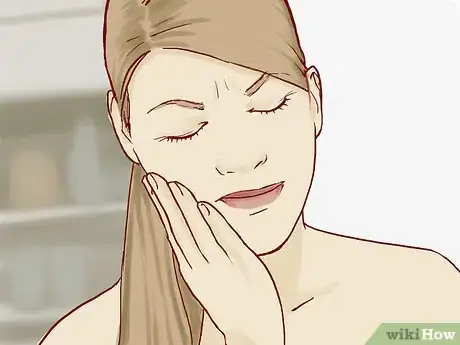
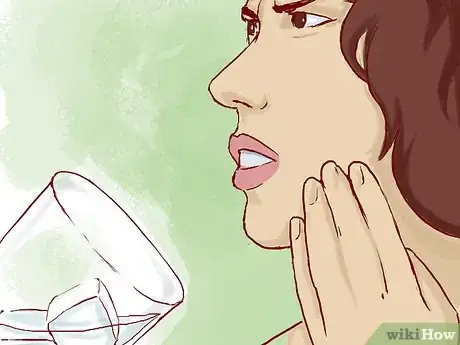
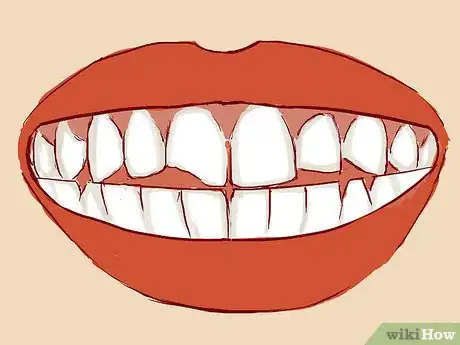
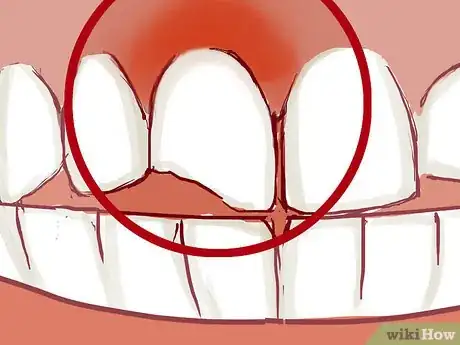
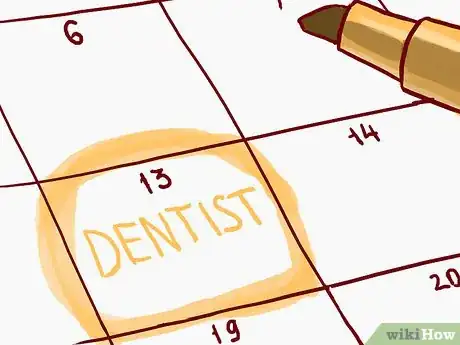
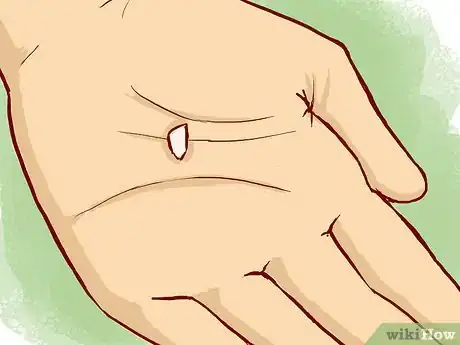
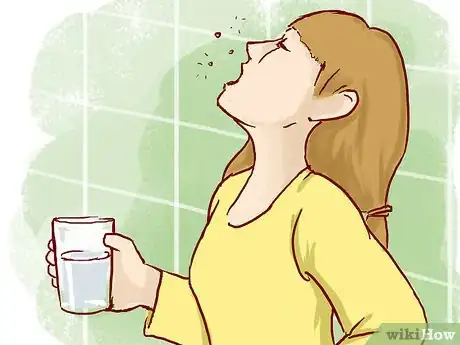
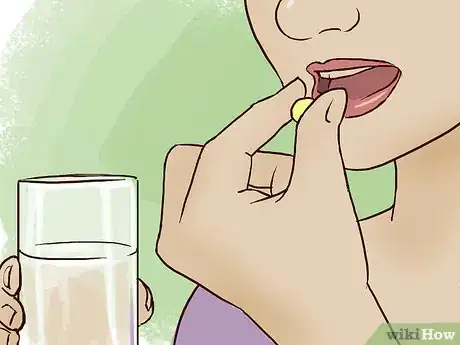
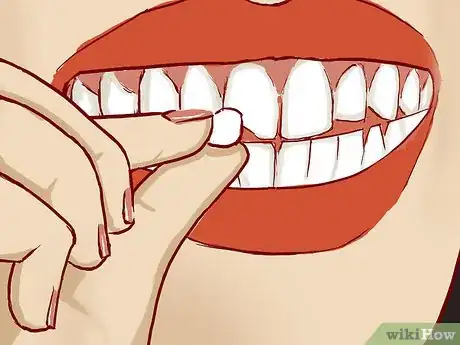
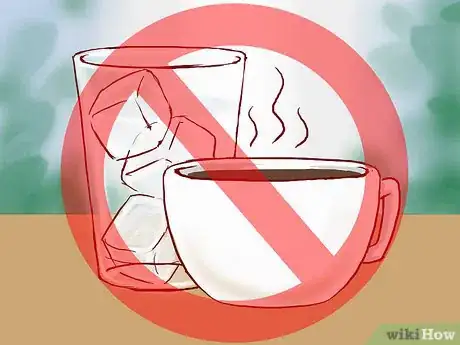

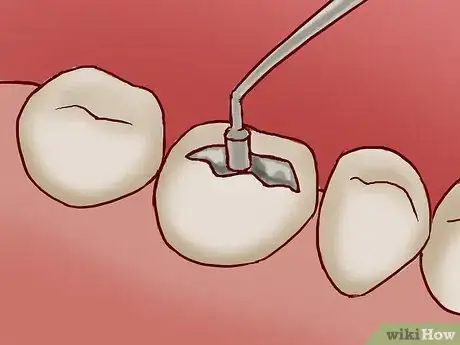

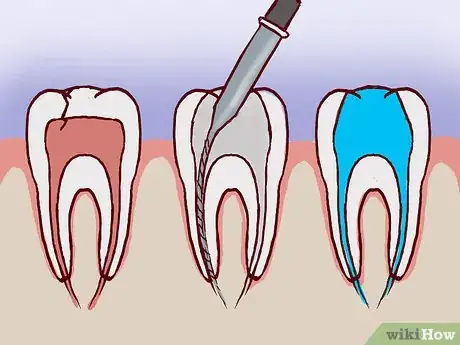
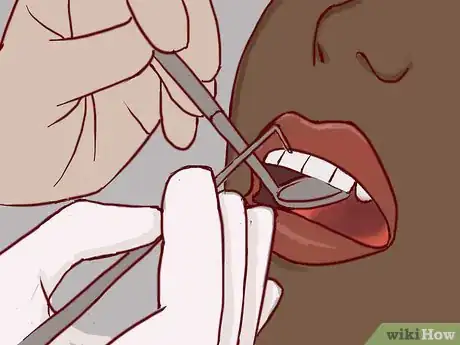
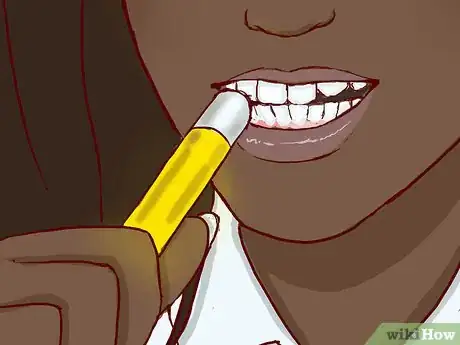

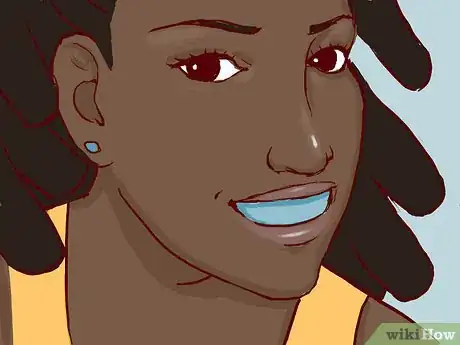
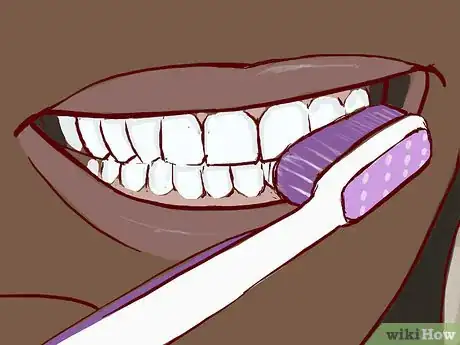
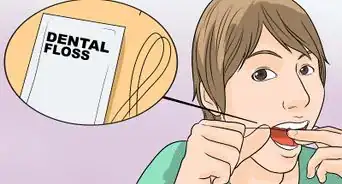
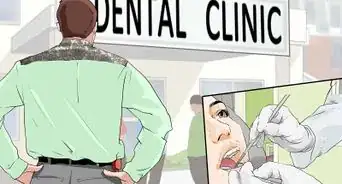
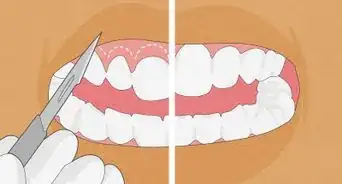
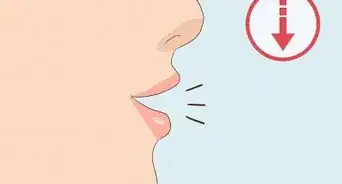
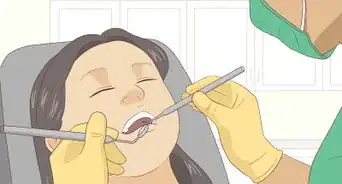

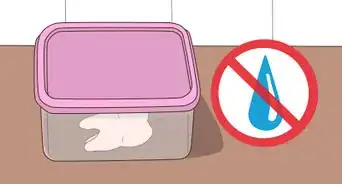
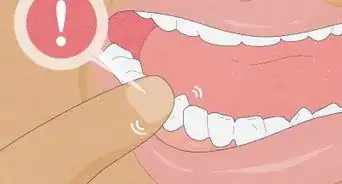
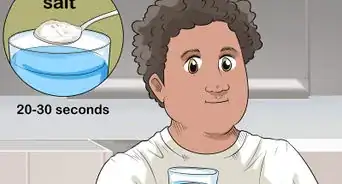

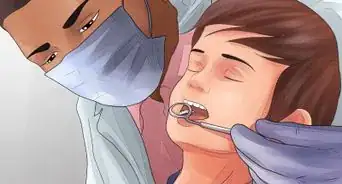














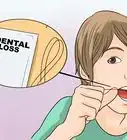
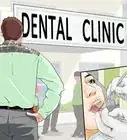
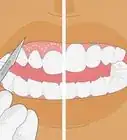
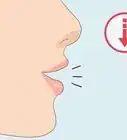



































Medical Disclaimer
The content of this article is not intended to be a substitute for professional medical advice, examination, diagnosis, or treatment. You should always contact your doctor or other qualified healthcare professional before starting, changing, or stopping any kind of health treatment.
Read More...